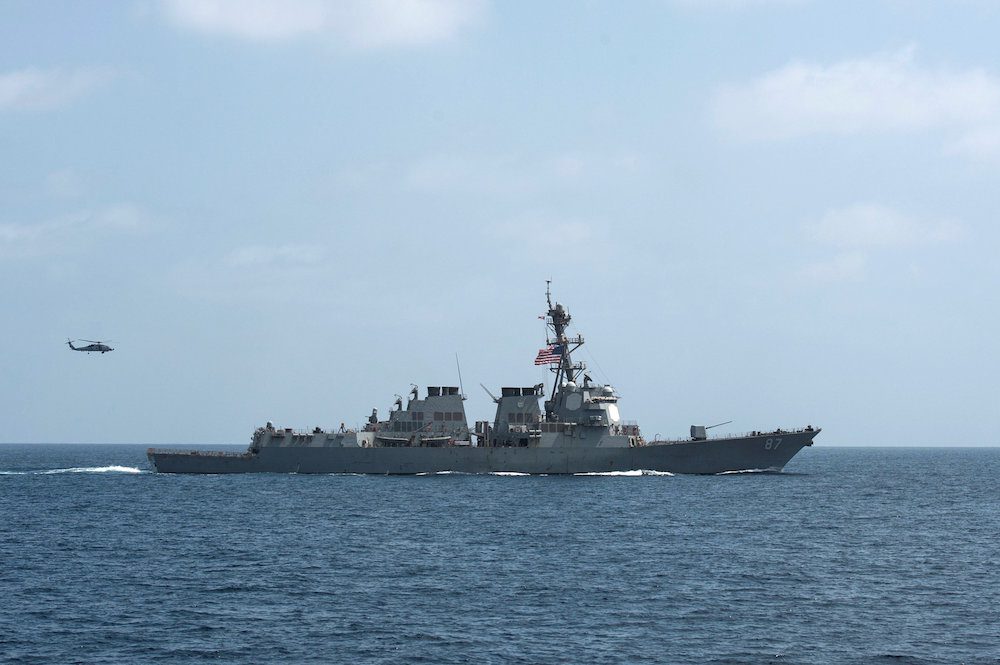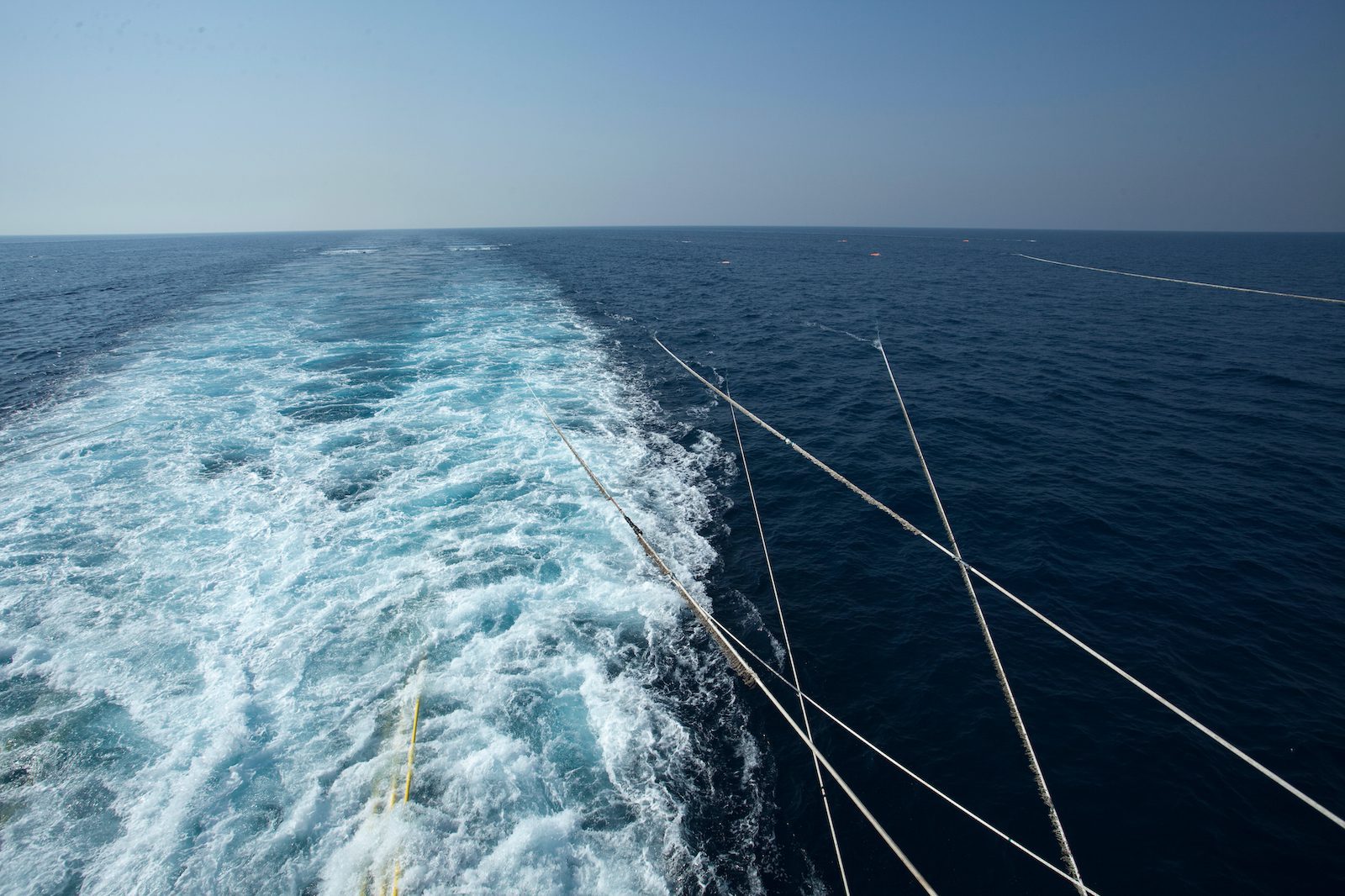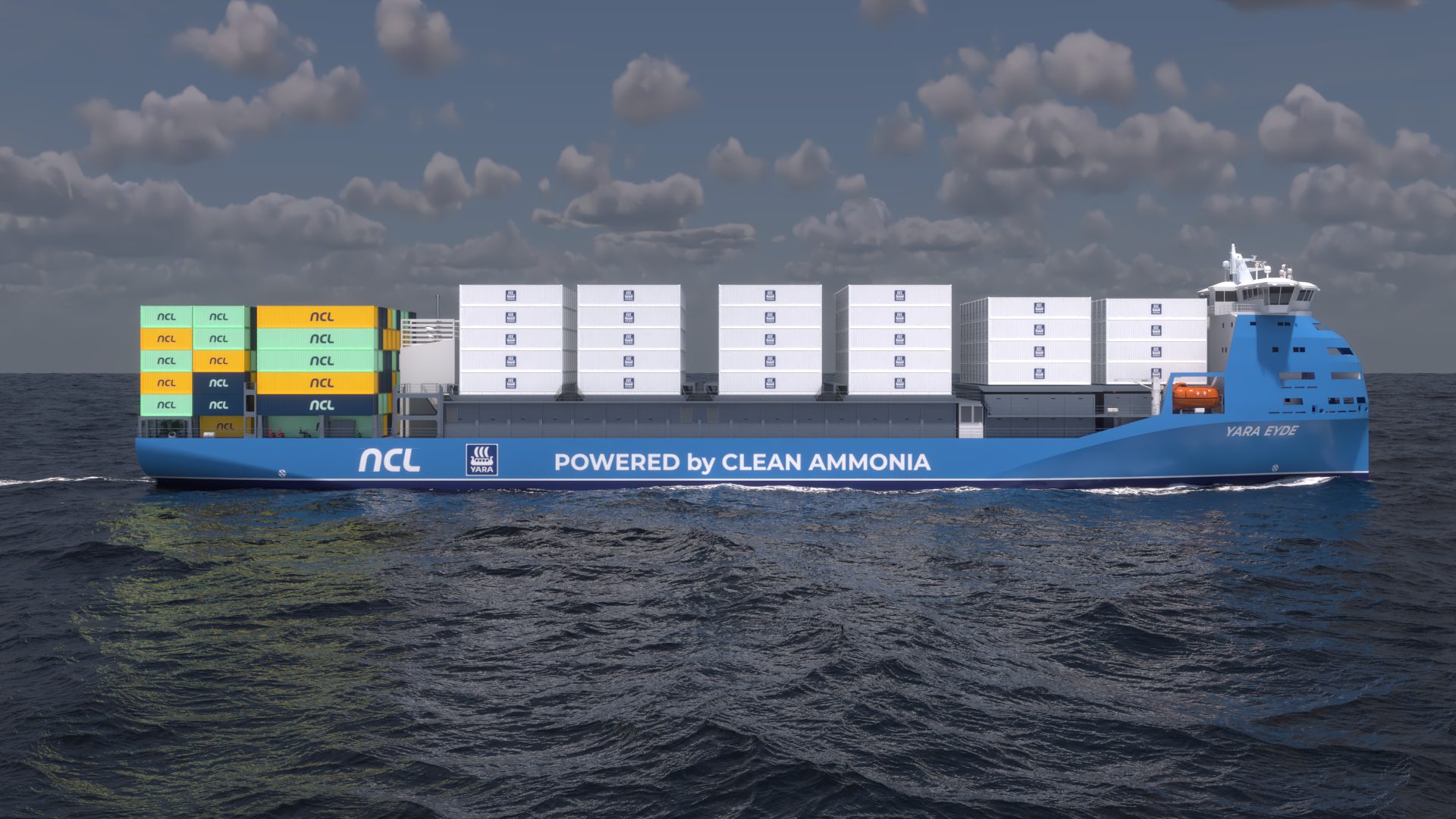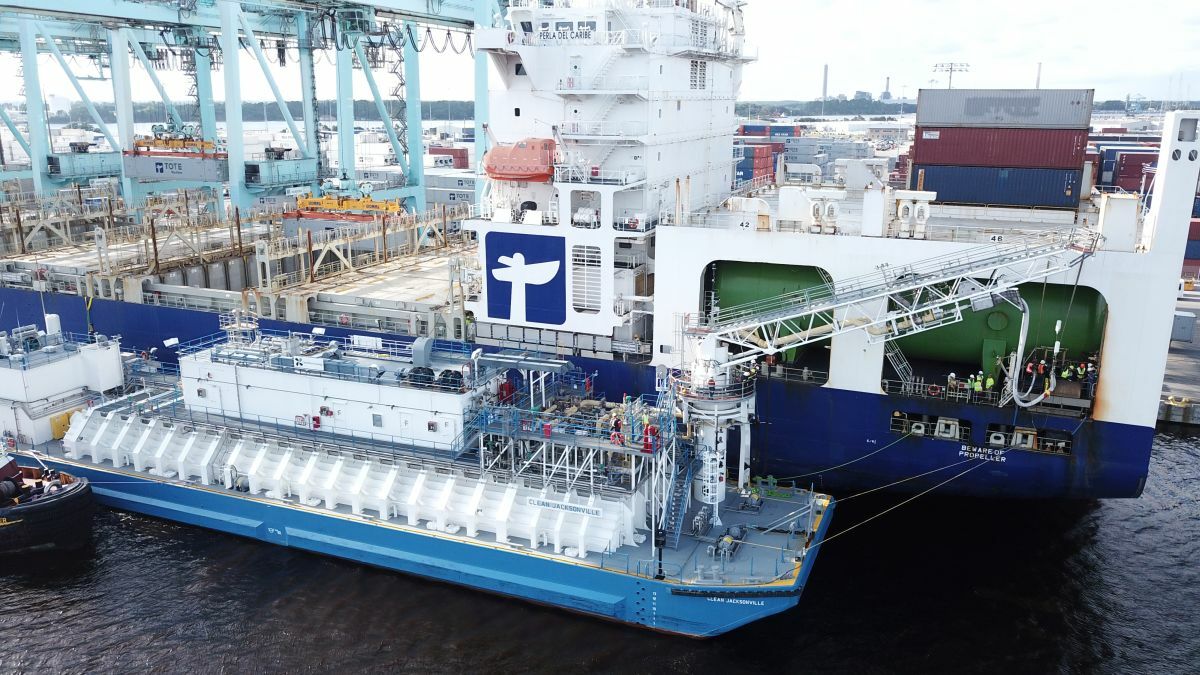FILE PHOTO – The U.S. Navy guided-missile destroyer USS Mason at sea in the Gulf of Oman, September 10, 2016. U.S. Navy Photo/Reuters
 By Phil Stewart and Idrees Ali
By Phil Stewart and Idrees Ali
WASHINGTON, Oct 17 (Reuters) – The Pentagon declined to say on Monday whether the USS Mason destroyer was targeted by multiple inbound missiles fired from Yemen on Saturday, as initially thought, saying a review was under way to determine what happened.
Any determination that the USS Mason guided-missile destroyer was targeted on Saturday could have military repercussions, since the United States has threatened to retaliate again should its ships come under fire from territory in Yemen controlled by Iran-aligned Houthi fighters.
The United States carried out cruise missile strikes against radar sites in Yemen on Thursday after two confirmed attempts last week to hit the USS Mason with coastal cruise missiles.
“We are still assessing the situation. There are still some aspects to this that we are trying to clarify for ourselves given the threat – the potential threat – to our people,” Pentagon spokesman Peter Cook told a news briefing.
Admiral John Richardson, the chief of naval operations, disclosed the latest incident during an event in Baltimore on Saturday, saying the USS Mason “once again appears to have come under attack in the Red Sea.”
Cook noted that the crew aboard the USS Mason detected what appeared to be a missile threat and responded appropriately.
U.S. officials cautioned, however, that details from the incident were still under review. It was unclear how soon a final determination might be made about how many, if any, missiles were actually fired at the USS Mason.
The U.S. cruise missiles launched on Thursday knocked out three coastal radar sites in areas of Yemen controlled by Houthi forces. U.S. officials, speaking to Reuters on condition of anonymity, have acknowledged additional potential targets were examined.
The missile strikes, authorized by President Barack Obama, represented Washington’s first direct military action against suspected Houthi-controlled targets in Yemen’s conflict and raised questions about the potential for further escalation.
The military encounters took place as diplomats have been making a new push for a ceasefire in Yemen.
Since March 2015, the country has been gripped by war pitting the Houthi group, backed by troops loyal to former President Ali Abdullah Saleh, and the internationally recognized government of Abd Rabbu Mansour al-Hadi, backed by Saudi Arabia.
Saudi Arabia and Hadi’s government accuse Shi’ite Iran of supplying weapons to the Houthis to help spread Tehran’s influence at the expense of Riyadh, its main regional rival. Iran denies the charge. (Reporting by Idrees Ali and Phil Stewart; Editing by Lisa Shumaker and Peter Cooney)
(c) Copyright Thomson Reuters 2016.

 Join The Club
Join The Club











